Vegetables can transform your grilling experience, offering a delicious and healthy addition to any meal. In this ultimate guide, you will discover necessary tips and tricks to perfectly grill a variety of vegetables, ensuring they are full of flavor and maintain their vibrant textures. From selecting the right produce to mastering cooking techniques, you’ll gain the knowledge you need to impress family and friends at your next barbecue. Get ready to elevate your grilling game and make your vegetables the star of the show!
Key Takeaways:
- Preparation is Essential: Properly prepare your vegetables by cutting them into even-sized pieces to ensure uniform cooking and seasoning for optimal flavor.
- Utilize Marinades: Enhance the taste of your grilled vegetables by marinating them beforehand; this adds depth of flavor and can help to prevent drying out during cooking.
- Choose the Right Heat: Use direct heat for quick-cooking vegetables and indirect heat for denser varieties, ensuring they cook all the way through without burning.
Understanding Grilling Vegetables
Clearly, grilling vegetables is more than just tossing them on the grill. It requires an understanding of which types of vegetables yield the best results when subjected to high heat. The process not only enhances their flavors but also alters their textures, making them a satisfying addition to any meal. By knowing the type of vegetables that respond best to grilling, you can create mouth-watering dishes that are visually appealing and packed with flavor.
Types of Vegetables Best for Grilling
Regarding grilling, certain vegetables shine brighter than others. The ideal candidates are those that can withstand heat without losing their structure or taste. Below is a table that summarizes some of the best options for grilling:
| Vegetable | Notes |
|---|---|
| Zucchini | Softens nicely, absorbs marinades well. |
| Bell Peppers | Sweet flavor intensifies with grilling. |
| Mushrooms | Retain moisture and add umami flavor. |
| Asparagus | Grills quickly and offers a satisfying crunch. |
| Eggplant | Absorbs flavors beautifully, becomes tender. |
- Cherry Tomatoes
- Onions
- Carrots
- Squash
- Any other vegetables you enjoy!
Seasonal Availability and Selection
There’s something inherently satisfying about choosing fresh, seasonal vegetables for your grilling endeavors. Seasonal produce not only offers better flavor but also ensures that you are getting the highest nutritional value. Depending on the time of year, you can select from a myriad of options, allowing for a diverse range of flavors and textures on your grill. Keeping track of what’s in season will not only enhance your dishes but also support local farmers.
It’s important to visit your local farmers’ market or grocery store regularly to get the freshest selections. By doing so, you can discover which vegetables are at their peak and ready for grilling. During the summer months, for instance, you’ll find a wealth of options like zucchini, corn, and tomatoes, while fall brings hearty veggies like butternut squash and Brussels sprouts.
Health Benefits of Grilled Vegetables
While grilling adds a delicious smoky flavor to your vegetables, it’s also a health-conscious cooking method. Grilled vegetables retain a high amount of their nutrients while under high heat compared to other cooking methods like boiling. Moreover, grilling allows natural sugars in the vegetables to caramelize, enhancing their flavor without the need for excessive oils or fats. This method not only supports a balanced diet but also makes it easier to incorporate vegetables into your meals.
Grilling your vegetables provides the perfect opportunity to experiment with healthful spices and marinades that can further elevate their nutritional profile. When you infuse your vegetables with herbs and spices, you not only boost their flavor but also add additional health benefits, as many spices possess antioxidant properties. Embrace the art of grilling vegetables, and you’ll be on your way to a healthier, tastier lifestyle.
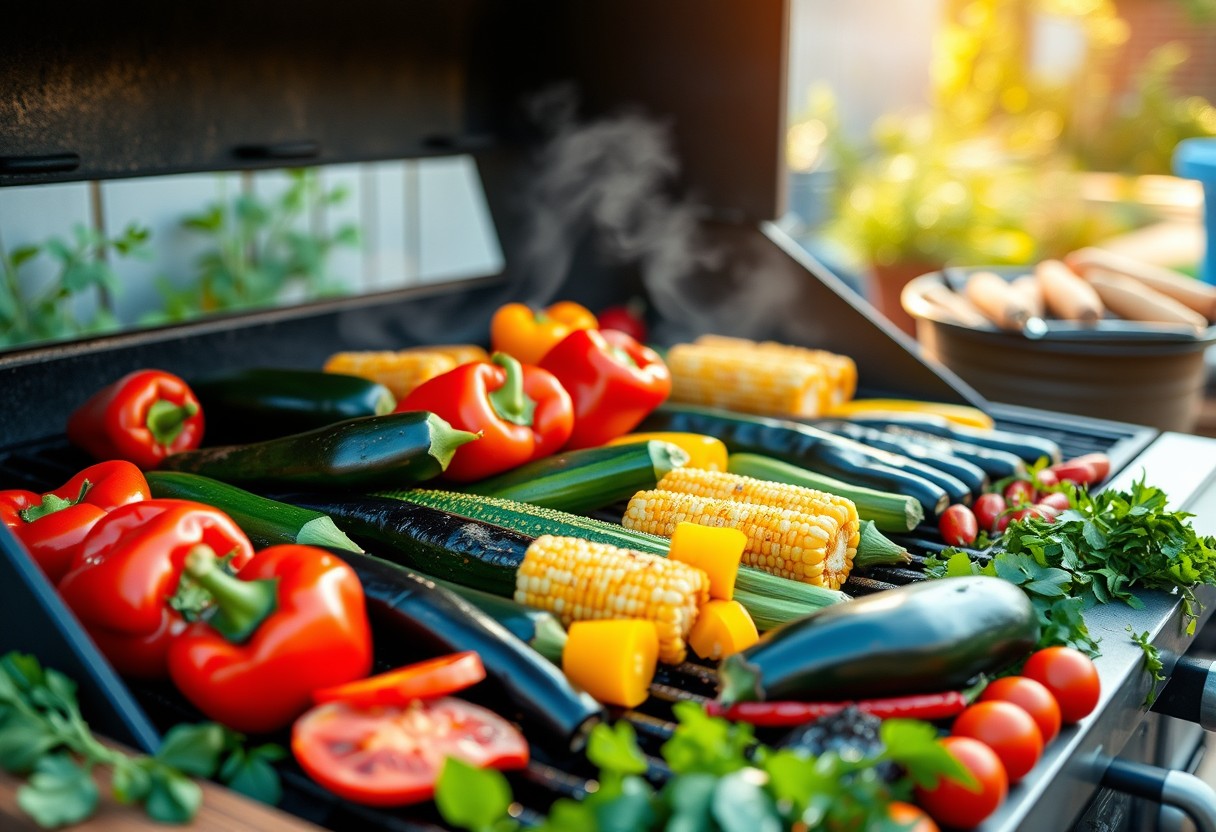
Essential Tips for Grilling
Any grill master knows that grilling vegetables requires its own set of skills and considerations. To ensure your vegetables come out perfectly every time, keeping a few crucial tips in mind can make all the difference. Here are some key points to consider:
- Preheat your grill for even cooking.
- Choose the right vegetables for grilling.
- Use the appropriate grill surface.
- Consider marinades and seasonings carefully.
- Be aware of timing and temperature.
Thou shall embrace these tips to elevate your outdoor cooking experience.
Preparing Your Vegetables for the Grill
With proper preparation, vegetables can take on a delicious smoky flavor and enhance your meals tremendously. Start by washing and drying your veggies thoroughly, as moisture can lead to steaming rather than grilling. Cut your vegetables into uniform pieces to ensure they cook evenly; heavier vegetables like zucchini, bell peppers, and eggplant work best when sliced into larger pieces, while smaller items like cherry tomatoes can go directly onto skewers or in a grill basket.
Next, consider the impact of marinating your vegetables. A simple marinade, consisting of olive oil, spices, and herbs, can enhance flavor and help prevent sticking on the grill. It’s advisable to marinate for at least 30 minutes or up to a few hours based on the type of vegetables you are using, all while avoiding overly acidic ingredients that can breakdown the structure of delicate veggies.
Choosing the Right Grill Surface
Now, the surface you use for grilling can significantly affect the cooking process and outcome. You have different options, such as grates—great for larger pieces of vegetables—or flat grill pans that work well for smaller items or finely chopped vegetables. If you opt for grates, it’s crucial to ensure they are cleaned and oiled to prevent sticking.
Grill grates tend to add appealing grill marks and a smoky flavor, while flat grill pans allow for easier handling, especially if you’re working with smaller pieces. Each surface serves its purpose, so choose based on the types of vegetables you plan to grill.
Grill mats can also be an excellent option, as they provide a non-stick surface while allowing the heat to circulate. This option is particularly helpful for delicate vegetables like asparagus and mushrooms that might fall through the grate.
Ideal Marinades and Seasonings
While grilling, a good marinade or seasoning can elevate your vegetables. The key is to complement the natural flavors of the veggies without overwhelming them. A basic marinade can consist of olive oil, balsamic vinegar, garlic, and herbs. For a zestier option, consider adding citrus juices, which not only enhance flavor but also contribute to caramelization on the grill.
Experimenting with different herbs and spices, such as cumin, paprika, or fresh basil, can yield delightful results. Remember to season your vegetables after marinating to add layers of flavor that enhance their taste.
Vegetables can absorb spices and oil remarkably well, so don’t shy away from experimenting with combinations. Knowing which spices pair well with different vegetables can create unique flavor profiles that impress your guests.
The Importance of Timing and Temperature
Choosing the right cooking time and temperature is crucial while grilling vegetables. Generally, most vegetables benefit from a medium-high heat (about 375°F to 425°F). Here’s a quick reference for grilling times based on vegetable types:
Grilling Time and Temperature
| Vegetable Type | Approximate Grilling Time |
|---|---|
| Zucchini | 6-8 minutes |
| Bell Peppers | 8-10 minutes |
| Eggplant | 8-10 minutes |
| Asparagus | 6-8 minutes |
Temperature control is crucial to prevent burning or undercooking your vegetables. Regularly checking doneness throughout the cooking process ensures you don’t overdo it.
Temperature management can make or break your grilling experience. Maintaining steady heat allows the flavors to develop beautifully while ensuring a perfect texture.
Step-by-Step Grilling Techniques
Now, it’s time to explore the necessary step-by-step grilling techniques that will elevate your vegetable grilling game. For a detailed insight, check out this comprehensive guide on How to Grill Any Vegetable. With the right techniques at hand, you’ll be on your way to creating perfectly grilled veggies that are full of flavor and make a stunning addition to any meal. Below, you will find a structured breakdown of the necessary steps to follow.
| Step | Description |
|---|---|
| Prepping Your Grill | Ensure your grill is clean and preheated to the right temperature before grilling vegetables. |
| Direct vs. Indirect Heat | Understanding when to use direct and indirect heat is crucial for perfectly grilled vegetables. |
| Grilling Specific Vegetables | Each vegetable may require a different approach when grilling, from preparation to timing. |
| Achieving Perfect Grill Marks and Flavor | Using effective techniques can help you achieve those coveted grill marks while enhancing flavor. |
Prepping Your Grill
Techniques for prepping your grill are fundamental to the success of your grilling experience. Always start with a clean grill; debris and leftover food can affect both the taste of your vegetables and your grill’s performance. Scrub the grates with a grill brush and ensure there’s no leftover residue from previous meals. Once it’s clean, preheat your grill for about 10 to 15 minutes, aiming for a temperature of around 400°F to 450°F, depending on the vegetables you plan to cook. A well-preheated grill will not only ensure that your veggies sear well but also help avoid sticking.
Remember to oil the grill grates lightly with a paper towel dipped in cooking oil to prevent your vegetables from sticking. This step is necessary, especially for delicate vegetables like zucchini and bell peppers. Using tongs to hold the towel ensures safety and prevents burns. Proper grill prep might seem small but can drastically improve your grilling results.
Direct vs. Indirect Heat
The method you choose, whether direct or indirect heat, plays a significant role in grilling various types of vegetables. Direct heat involves placing your vegetables directly over the flames or heat source, perfect for quick-cooking items like bell peppers, asparagus, and corn on the cob. This method yields a nice char and caramelization, enhancing the flavor profile of your veggies. In contrast, indirect heat involves placing the vegetables adjacent to the heat source, which is suitable for denser or larger vegetables like eggplants and whole onions that require longer cooking times without burning.
Your choice of heat method also relates to the size and type of the vegetable. For instance, when grilling thicker vegetables, using indirect heat ensures they cook evenly throughout without charring the outsides too soon. It’s beneficial to keep an eye on your veggies and adjust their position on the grill as necessary.
Grilling Specific Vegetables (e.g., bell peppers, asparagus, zucchini)
With a variety of vegetables to choose from, each type requires unique handling for optimal grilling. Bell peppers should be cut into strips to maximize surface area, allowing for better caramelization. Asparagus, being slender, is best grilled whole, preferably with a drizzle of olive oil and a sprinkle of salt. Zucchini can be sliced into long strips or round discs, allowing for varied textures and grill marks. Timing is vital—most of these vegetables will take about five to seven minutes on direct heat to reach the perfect tender-crisp state.
Plus, consider marinating your vegetables beforehand to enhance their flavor even further. Simple marinades made from olive oil, garlic, and herbs can elevate the taste of your grilled veggies. Be cautious not to soak them for too long, as it can make them too wet and reduce grill marks.
Achieving Perfect Grill Marks and Flavor
Zucchini and other vegetables can often be plagued by the issue of not achieving those perfect grill marks. To get those lovely char lines, ensure you’re not overcrowding the grill, giving each piece of vegetable adequate space. Placing vegetables on a clean grill ensures they have a good initial sear, locking in moisture and flavor. You want to ensure the vegetables aren’t moved for at least a minute after placement to let them form those beautiful grill marks.
Flavor is another crucial aspect of grilling vegetables. To amplify the natural sweetness of your veggies, consider using high heat for shorter cooking times, which brings out caramelization. Adding ingredients like balsamic vinegar or fresh herbs right after turning off the grill can infuse an additional layer of flavor, making the final dish irresistible.
Factors Influencing Grilling Results
All successful grilling sessions hinge on several key factors that can greatly influence your results. Understanding these elements will allow you to optimize your technique and achieve perfectly grilled vegetables every time. Consider the following:
- Grill type (gas, charcoal, electric)
- Cooking time for different vegetables
- Weather conditions
- Marinades and seasoning
- Temperature settings
Perceiving these elements will transform your approach to grilling and enhance the flavors of your dishes.
Grill Type – Gas vs. Charcoal vs. Electric
On your grilling journey, the type of grill you choose plays a crucial role in the outcome of your vegetables. Gas grills offer convenience and precise temperature control, allowing you to easily manage the heat level during the grilling process. Charcoal grills, on the other hand, impart a rich smoky flavor to your vegetables but require a bit more time and effort to reach the desired temperature. Electric grills are also an option, particularly if you’re short on space or grilling indoors, though they may not provide the same level of flavor as charcoal or gas grills.
Ultimately, the best grill type may also depend on your specific preferences and grilling experience. If you enjoy the hands-on approach of charcoal grilling, you might appreciate the flavor nuances it brings. However, if your focus is primarily on ease and quick cooking, a gas grill could be your best bet. Whichever option you choose, knowing how each grill type affects the grilling process will empower you to make informed decisions.
Cooking Time for Different Vegetables
While every vegetable varies in thickness, moisture content, and overall structure, these factors influence their cooking time on the grill. For example, heartier vegetables like bell peppers and eggplants require a longer cooking time than more delicate options such as asparagus or zucchini. It’s crucial to monitor your vegetables closely and adjust the grilling time based on their specific traits. Ensuring even cooking will not only enhance flavors but also prevent them from becoming overcooked or charred.
Different vegetables absorb heat at varying rates, affecting how long they need on the grill. To get the best results, it’s often helpful to par-cook denser vegetables, such as potatoes or carrots, before grilling. This approach allows for more even cooking and ensures that they achieve that perfect balance of tenderness and flavor. Additionally, keep in mind that spices and oils can impact cooking time, so adjust accordingly based on any marinades or seasonings you apply.
Weather Conditions and Their Impact
If you’ve ever grilled outdoors, you know that weather conditions can significantly influence your grilling experience. Wind, humidity, and temperature can all affect how your grill performs and how your vegetables cook. For instance, on a breezy day, your grill may take longer to reach the desired heat level, which can ultimately alter cooking times. Additionally, high humidity can cause moisture to accumulate on your vegetables, making them more susceptible to steaming rather than grilling.
Grilling in fluctuating temperatures can also complicate the process. Cold weather may require you to adjust the cooking time, while hot weather can lead to faster cooking. It’s recommended that you use a reliable thermometer to monitor the grill’s internal temperature, ensuring that your vegetables cook evenly no matter the weather. Being adaptable in these changing conditions will guarantee flavorful results every time you fire up the grill.
Pros and Cons of Grilling Vegetables
For those considering adding grilled vegetables to their culinary repertoire, it’s important to weigh the advantages and disadvantages. Grilling can transform the humble vegetable into a delicious side dish or main element of your meal. However, like any cooking method, it comes with its own set of pros and cons. The table below outlines some insights to help you decide if grilling vegetables is right for you.
| Pros | Cons |
|---|---|
| Enhances flavor | Nutrient loss |
| Induces appealing textures | Burn risks |
| Promotes cooking versatility | Requires attention and skill |
| Encourages social eating | May cause smoke and flare-ups |
| Saves time in meal prep | Not all vegetables grill well |
| Offers health benefits with low fat cooking | Potential for uneven cooking |
Advantages – Flavor and Texture Enhancement
With grilling, you can significantly enhance the natural flavors of vegetables. The high heat caramelizes the sugars, creating a deeper, more complex taste that raw or boiled vegetables lack. You’ll notice the delightful char and smoky flavor that can make even the most modest vegetables shine, transforming them into a star on your plate. This method not only adds flavor but also encourages a variety of cooking techniques, from direct grilling to roasting in foil packets, maximizing your culinary creativity.
Furthermore, grilling imparts a crispy texture that offers a satisfying bite. You may find that vegetables like zucchini, bell peppers, and eggplants develop a wonderful contrast between a crispy exterior and tender insides. This texture enhancement makes grilled vegetables an appealing addition to any meal, encouraging even picky eaters to enjoy their greens.
Disadvantages – Nutrient Loss and Burn Risks
One downside to grilling vegetables is the potential nutrient loss that can occur at high temperatures. While some nutrients may degrade during grilling, particularly water-soluble vitamins such as Vitamin C, the extent of this loss varies depending on the vegetable and grilling duration. If you’re seeking to preserve the maximum nutritional value of your vegetables, you might want to consider shorter grilling times or combining grilling with other cooking methods to retain their goodness.
Another concern is the risk of burning. Grilling demands close attention, as it’s all too easy for vegetables to go from perfectly charred to burnt in moments. This not only creates potential cancer-causing compounds but can also lead to an unpleasant bitter taste that detracts from your overall meal. Selecting the right duration and technique is crucial in preventing this common pitfall when grilling.
Disadvantages such as nutrient loss and burning can take a toll on the health benefits of grilled vegetables. It’s important to balance the joy of grilling with proper techniques to help mitigate these risks. One effective strategy is to marinate your vegetables before grilling, which can not only enhance their flavor but also help protect them during cooking. Additionally, keeping a close eye on the heat and turning your vegetables regularly will assist in attaining that desirable char without going overboard.
Environmental Considerations
The environmental impact of grilling is another factor you should ponder. Grilling vegetables typically requires using fuel sources like charcoal or propane, both of which have different environmental footprints. While gas grills tend to produce fewer emissions than charcoal, the production and transportation of these fuels contribute to their overall impact on the environment. Opting for sustainable, eco-friendly fuel sources can mitigate some of these concerns.
Moreover, the choice of vegetables makes a difference. Sourcing local, seasonal vegetables reduces the carbon footprint associated with transporting produce from far-off lands. Supporting local farmers not only benefits your community but also allows you to enjoy fresher, tastier ingredients that can truly elevate your grilling experience.
Another way to address the environmental aspects is by considering your grilling habits. Frequent grilling can increase your carbon footprint, particularly if done using less efficient methods or fuels. Being mindful of your cooking practices, such as reducing frequency or choosing energy-efficient options, can contribute to a more environmentally conscious grill setup.
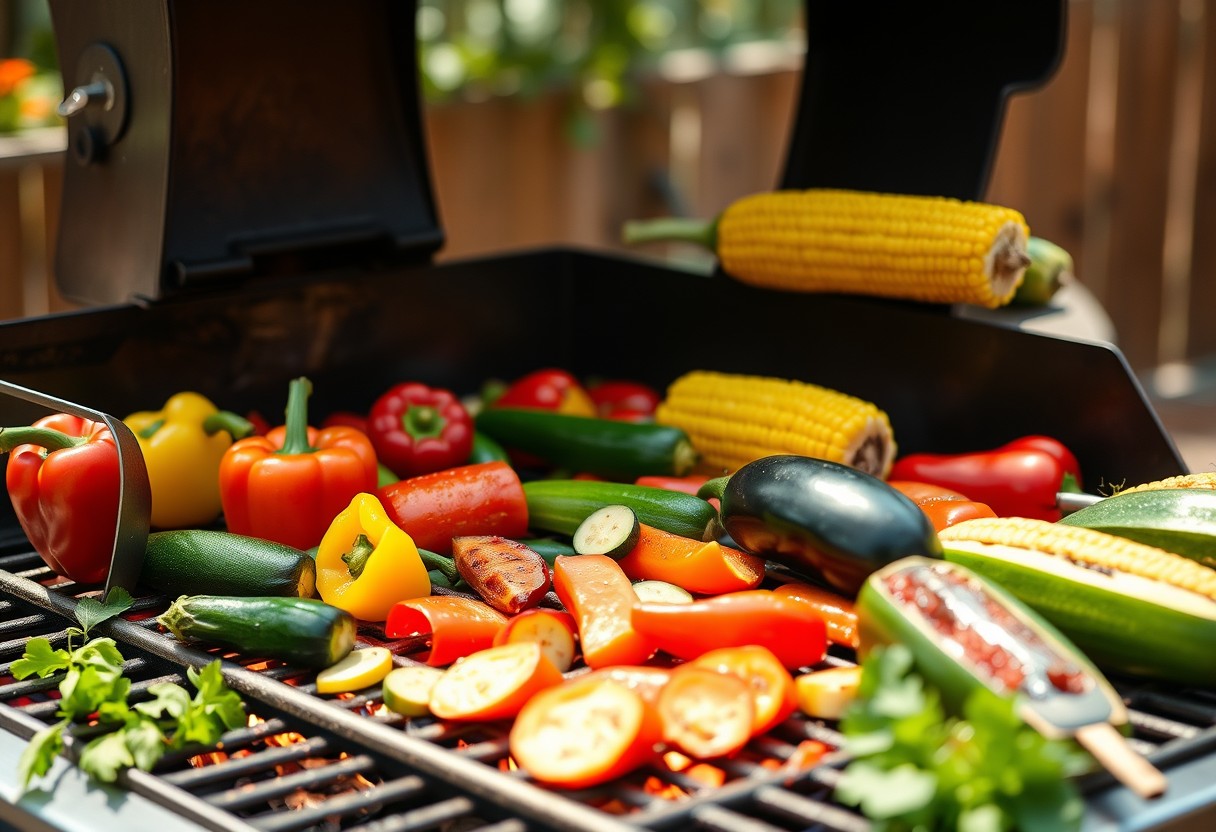
Creative Ideas and Recipes
To elevate your vegetable grilling game, consider incorporating some creative ideas and recipes that will make your dishes stand out. Grilled vegetables are versatile and can be combined in various ways to excite your taste buds and impress your guests. With a little creativity, you can transform ordinary vegetables into stunning culinary masterpieces that not only look appealing but also burst with flavor.
Grilled Vegetable Skewers
The first idea to try is grilled vegetable skewers. These fun and colorful skewers are not only visually appealing but also make for easy handling and serving at your next barbecue. Choose a variety of vegetables such as bell peppers, zucchini, cherry tomatoes, and mushrooms. Cut them into similar sizes for even cooking, then marinate your veggies in olive oil, balsamic vinegar, and a sprinkle of your favorite herbs. Thread them onto skewers, alternating between colors and shapes for a beautiful presentation.
The key to perfectly grilled vegetable skewers is to ensure even cooking. Soak wooden skewers in water for about 30 minutes to prevent them from burning on the grill. Make sure to grill them over medium heat, turning occasionally until they develop those mouthwatering grill marks. Serve your skewers as a colorful appetizer or a side dish that pairs beautifully with any grilled protein.
Vegetable Grill Packs
Any grilling aficionado knows that vegetable grill packs are a game changer. These convenient bundles allow you to mix and match your favorite vegetables, making clean-up a breeze and ensuring that your veggies stay juicy and flavorful. Simply chop your chosen vegetables—like carrots, bell peppers, onions, and squash—and toss them with olive oil, salt, pepper, and other herbs or spices. Then, wrap them up securely in aluminum foil, creating a tight packet to retain moisture while grilling.
For instance, consider adding some fresh herbs such as rosemary or thyme to your vegetable grill packs for added depth of flavor. You can also include a splash of lemon juice or a sprinkle of cheese before sealing them, creating a delightful surprise once they’re opened on the grill. Allow your packets to cook on indirect heat for 15-25 minutes, depending on the types of vegetables used, achieving perfectly grilled, tender vegetables every time.
Innovative Dips and Sauces for Grilled Vegetables
Sauces and dips can take your grilled vegetables to the next level. Pairing them with the right condiment enhances their natural flavors and adds an extra layer of complexity to your meal. Classic options like a tangy chimichurri or a zesty yogurt sauce work wonderfully, but don’t shy away from experimenting with recipes that complement your chosen veggies. Consider creating a spicy harissa dip or a creamy tahini sauce to offer diversity in flavors during your meals.
Understanding the balance of flavors is important when it comes to dips and sauces. For example, if your grilled vegetables are on the sweeter side, such as grilled corn or bell peppers, you may want to pair them with a sauce that has a bit of acidity or heat to balance out the sweetness. On the other hand, earthy vegetables like eggplant or mushrooms could benefit from a rich, savory sauce that adds depth. By playing around with various combinations, you’ll find that the right dip can elevate even the simplest grilled vegetables into a standout dish.
To Wrap Up
Ultimately, mastering the art of grilling vegetables not only enhances your culinary repertoire but also elevates your outdoor cooking experience. By following the tips and tricks outlined in this guide, you can ensure that your grilled vegetables are bursting with flavor and texture. Remember to choose the right veggies, prep them properly, and utilize techniques such as marinades or grilling baskets to make the most of your grilling sessions. With a little practice and experimentation, you will soon find yourself serving up delicious, perfectly grilled vegetables that impress family and friends alike.
Your journey into the world of grilled vegetables doesn’t have to stop here. Continue to explore various combinations, seasonings, and grilling methods that work best for your taste. Keep in mind that each vegetable has unique characteristics that can be highlighted through different cooking techniques. The more you grill, the more confident you will become, and soon you’ll be customizing your approach to create the ultimate vegetable medley that satisfies your palate. So fire up the grill, and let your imagination soar as you make your next outdoor gathering unforgettable with vibrant, flavorful grilled vegetables.

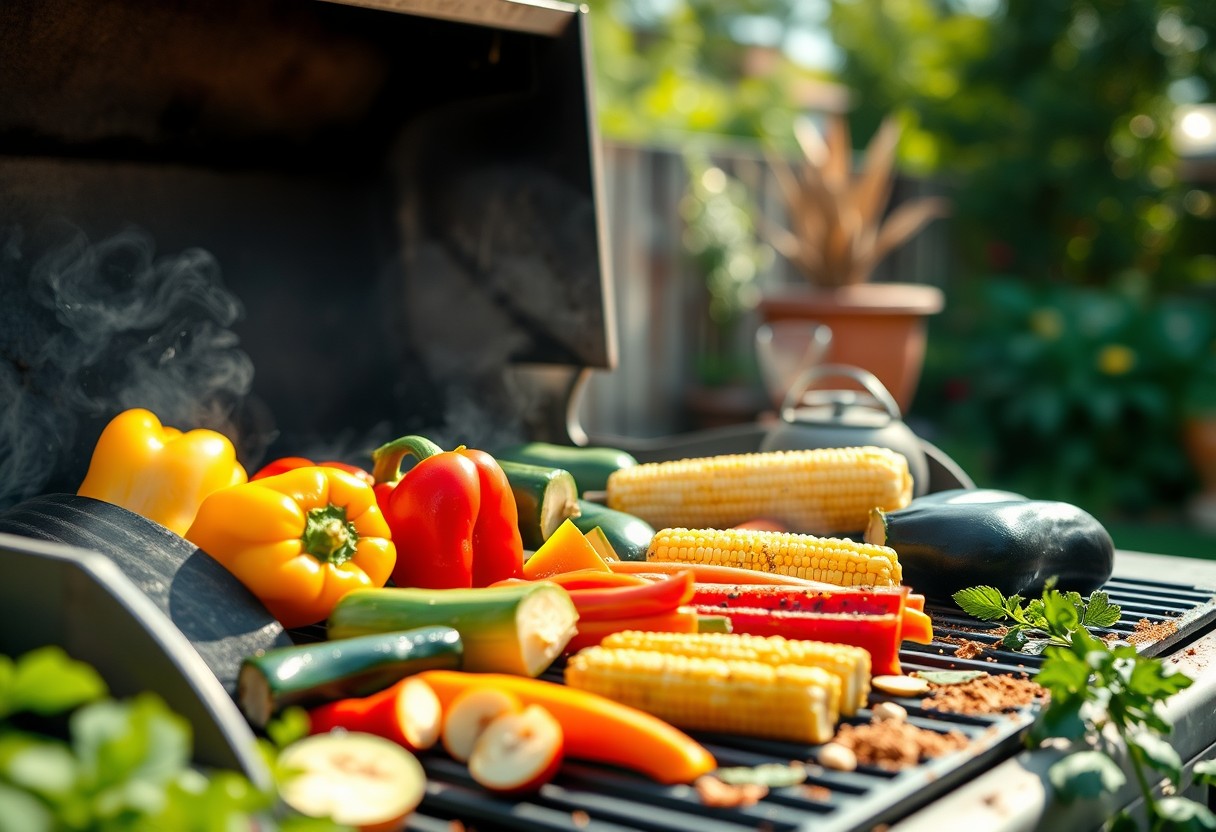

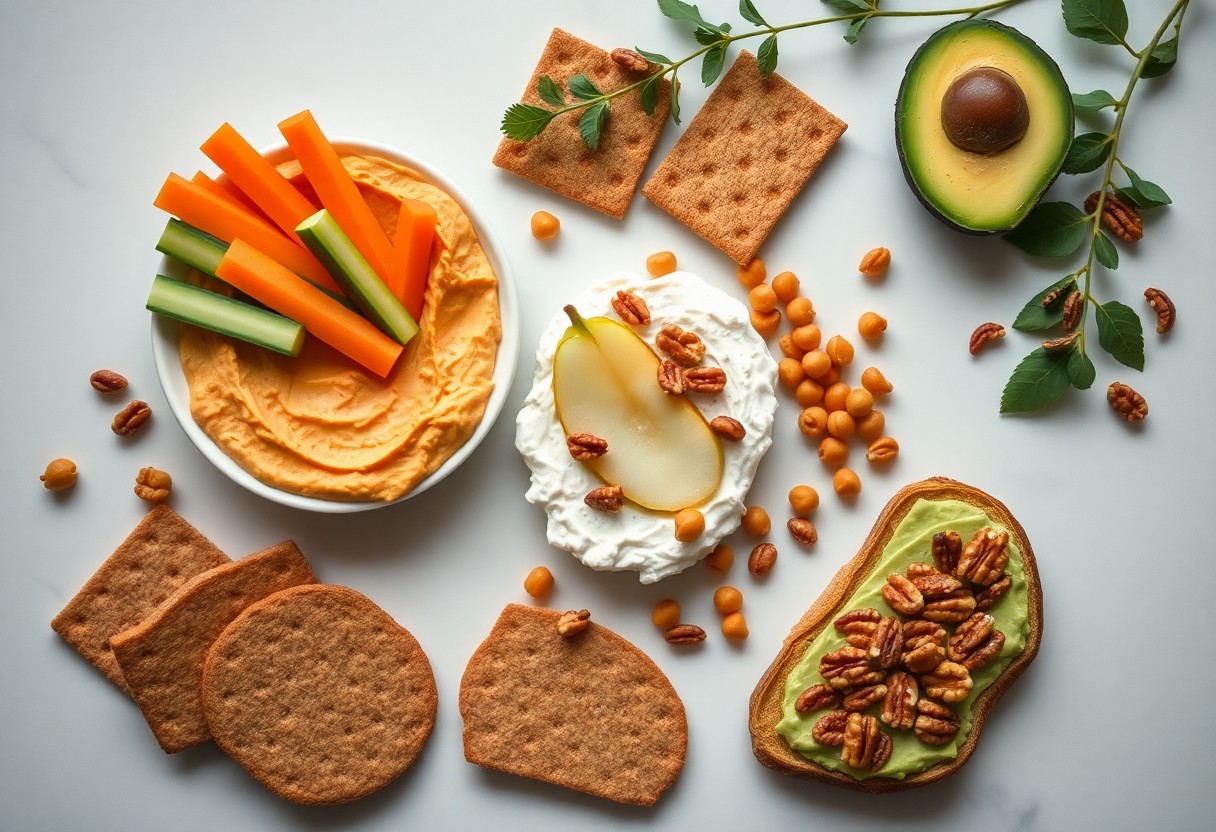
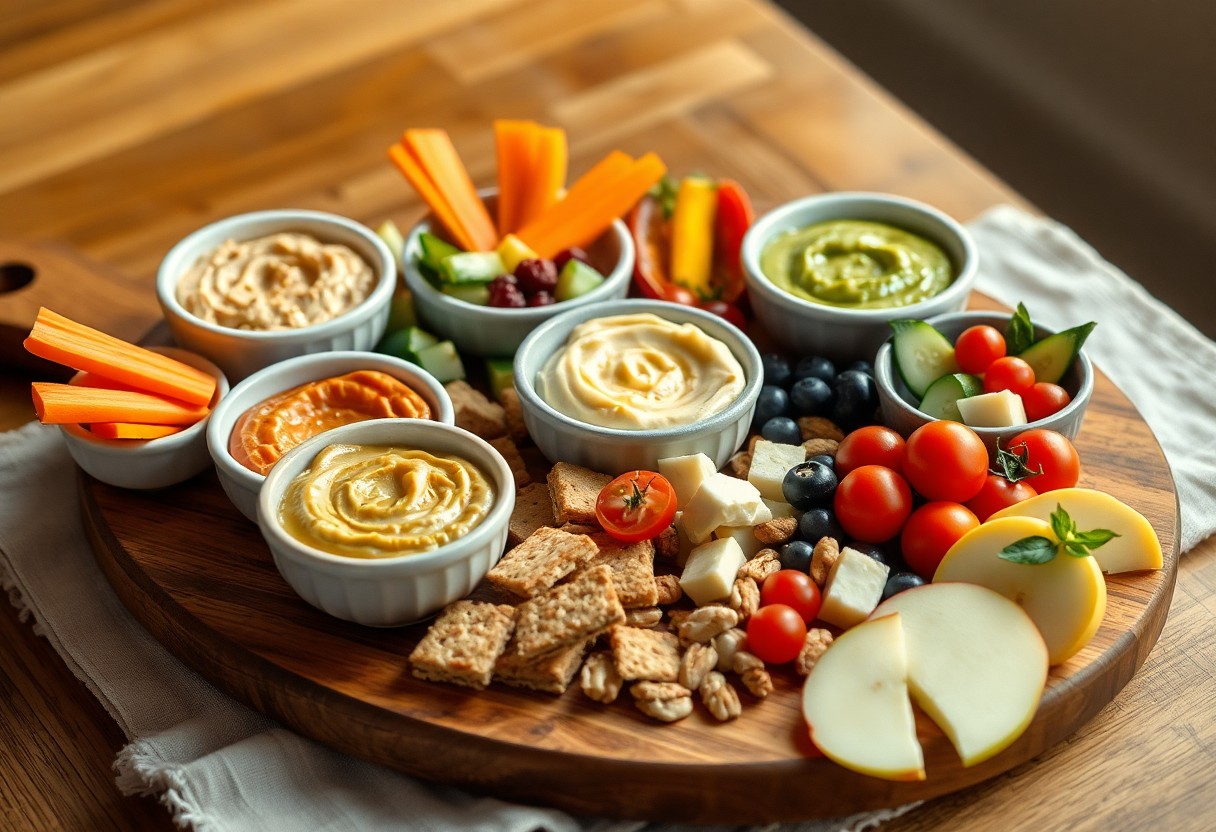
Leave a Reply